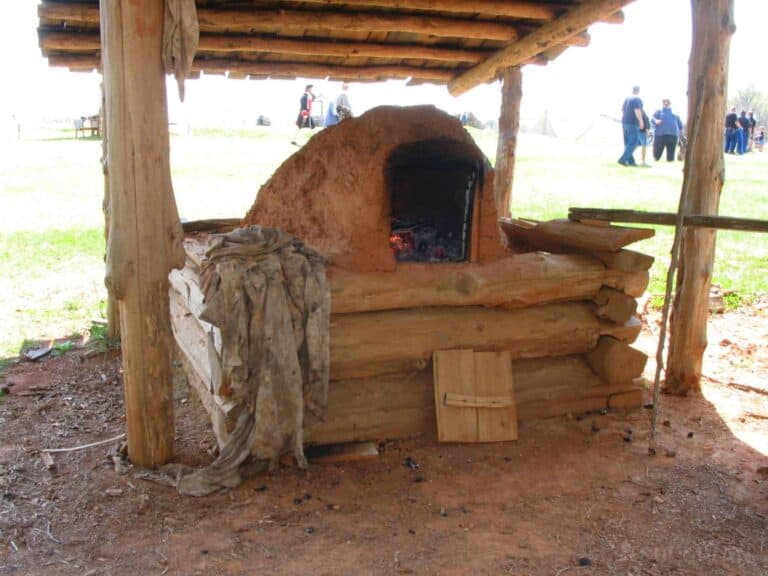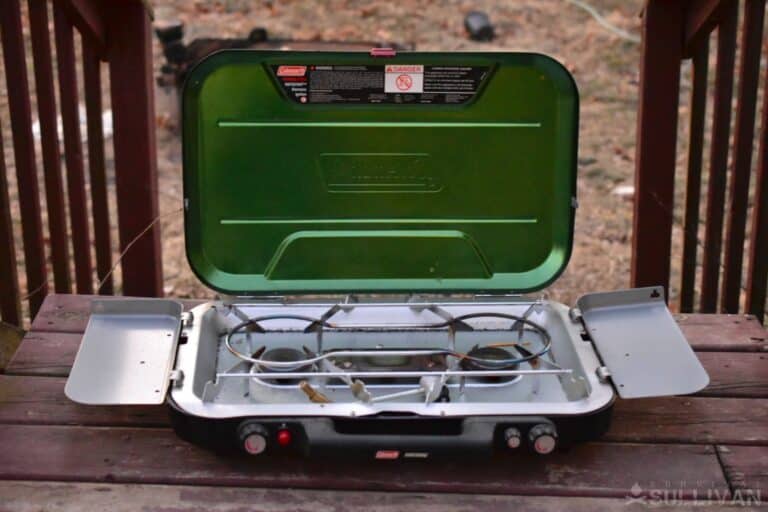Wherever you go in the world, even Mars, I can bet that 99% of the time the best cooks are men. The same theory should apply when cooking at your bug out location, right?
Obviously, that’s not the point of today’s article. I mean it’s not a contest of who’s better between the genders when it comes to cooking, but instead it’s about what to do and what not to do when cooking at your BOL, when off the grid, and things of that sort.

In my opinion, having yourself organized in regards to your bug out location is not the end of your problems. In a SHTF event, if you manage to bug out and you find yourself riding in green fields with the sun on your face, and your food stash safe and sound, well, this is just the beginning. Because you’ll have to eat at some point and eating while living off the grid comes with its own unique problems.
Of course, you can eat pork and beans right out of the tin can, but they’ll be cold and nasty and in a long-time survival situation, I bet you’ll run out of cans quickly. Not to mention that warm canned food is much better tasting than serving it at room temperature.
Also, there are some types of food that you’ll have to cook properly after you’ve ran out of cans. I mean, how many cans of pork and beans can you stash anyway?
It gets boring at some point eating food out of a can, day in and day out. So, you’ll have to find alternatives, like going out, to hunt and gather, the old school way.
Here fire and cooking using fire come into play. But cooking outdoors, inevitably on an open fire after SHTF, comes with the unpleasant issue of attracting attention of not very friendly persons, for example uninvited and probably hungry drifters.
And if you’re not ready to share (or defend at gunpoint) your supplies with total strangers, things can get messy. You don’t want that kind of trouble now, do you?
Hence, cooking on an open fire at your bug out location may be a popular idea, but it’s not a very practical one, don’t you think? When cooking outdoors in a survival scenario, you should keep in mind two concepts: safety and efficiency. By safety, I mean OPSEC (operation security), i.e. keeping a low profile and trying not to draw attention to yourself (and your family, if any).
How to keep a low profile when cooking outdoors? Well, try to minimize or hide the smoke from your campfire by using only dry wood (never leaves, oily things, or anything green). Avoid cooking on windy days or cook under lots of trees as they help with smoke dispersal.
Also, don’t put the fire out by using water, try to cover or smother it with dirt instead, there will be less smoke. An underground fire also tends to make less smoke than a regular fire pit. But bottom line, it’s next to impossible to hide the smoke, all you can do is to diminish it by keeping fires small and make it less visible.
Odors and smells are giveaways when cooking at your BOL, just like the smoke. And much like the smoke, cooking smells are almost impossible to hide.
Along with cooking methods, you must pay attention to minor thing which are actually fundamental in cooking: metallic forks and knives (people tend to pack plastic cookware, dishes, and utensils which are useless in a survival scenario because plastic can’t withstand the high temperatures.
Consider wood stoves, cast iron cookware, and even solar ovens. Solar is important here because if we’re talking about the availability of fuel or power, I bet they will be the first to go down in a SHTF scenario, while the Sun will keep on shining ad nauseam.
Back to that right after the break.
Now let’s take look at the most common methods of cooking at your bug out location, while off the grid (without electricity, gas or luxuries of that sort).
Remember one fundamental thing: if you want to enjoy hot and tasty meals at your BOL, it would be best to store proper cooking tools at the respective location. It’ll make your life easier and it’s better to be prepared in advance than to be forced to improvise on the spot.
Let me begin with a statement: a life without coffee is not worth living, even in a post zombie-apocalypse scenario. You should get yourself a coffee percolator.
With this inexpensive piece of gear you’ll be able to enjoy a hot, strong coffee every day while off the grid and make your bug out adventure orders of magnitude more enjoyable. Of course, you can use a regular metallic pot for that, but if you’re a coffee aficionado you’ll realize and appreciate the difference.
With coffee taken care of, an earth oven built from sand, straw, newspaper, water, and clay is an excellent DIY project for your bug out location.
Here’s a video tutorial about the engineering issues behind this project and here’s another on “how to cook” using an earth oven. Pretty cool stuff and if you master the art of building and cooking on an earth oven, you’ll be an accomplished survivalist.
The hobo stove was invented a long, long time ago in a galaxy far, far away, before our glorious days of political correctness which replaced the word hobo with homeless.
A hobo stove symbolizes the dark art of cooking food without almost any gear available. This is as basic as it gets, yet it’s also as efficient as humanly possible. Here’s a comprehensive tutorial about how to DIY a hobo stove:
Another must have piece of gear for outdoors cooking is a spider Dutch oven, which is excellent for cooking over an open fire, or a Dutch oven with a casserole skillet (two items for the price of one!), or something similar.
Don’t forget to acquire a Dutch oven lid lifter, because these babies tend to get pretty hot and your hands are valuable assets in a SHTF scenario.
Now, let’s take a look at all these Dutch gizmos, what you’re going to do with them? Well, that’s an easy question to answer. The name of the game is Dutch oven cooking, i.e. using cast iron receptacles for outdoors cooking at your BOL.
This type of cooking gear works basically just like your home oven and you can cook in a similar fashion on an open fire/campfire using them. Also, this is the way pioneers used to cook their food back in the day, when everything was happening outdoors, and the USA was a wild and mostly uninhabited piece of land, bursting with wild-life.
Obviously, these are items/methods of cooking that will typically be used over open fires, which may attract attention as I told you in the preamble, so fair warning.
Yet, despite the disadvantages in terms of OPSEC, mastering the fine art of campfire cooking is a very important skill to acquire if you’re a survivalist preparing for the worst.
There’s also the lure and the romanticism of a campfire. And almost nothing is better in terms of taste and appeal than food cooked outdoors over an open fire.
Disclosure: This post has links to 3rd party websites, so I may get a commission if you buy through those links. Survival Sullivan is a participant in the Amazon Services LLC Associates Program. As an Amazon Associate, I earn from qualifying purchases. See my full disclosure for more.
Dutch ovens aside, the next best thing for cooking outdoors is using a camping stove, which works great for reheating food or boiling water and what not. Naturally, this kind of setup requires propane/isobutene canisters. There are advantages here along with disadvantages.
The most obvious advantage of the butane/propane powered camping stove is that it works great and fast, without smoke and the fuss associated with smoke.

Where there’s smoke, there’s fire, right? So it’s pretty cool OPSEC wise. The disadvantage is that you can only store a limited amount of propane/isobutene. After it goes out, your camping stove is dead for good.
Hence, you should prepare for the SHTF situation with multiple propane cylinders at your BOL. Propane tanks are an excellent alternative for cooking your food/heating your crib when the power is out, so remember to keep your tanks topped up at all times.
For residential use, you can store 500 pound cylinders at your BOL and it would be a good idea to also install a propane grill while you’re at it. But what are you going to do when the propane you’ve stored finally runs out?
This question brings us to the next solution for cooking off grid, solar cooking. Some say solar cooking is the best thing ever invented since sliced bread. Why?
Simply because you’ll use an infinite and abundant source of energy for preparing/heating your meals, except for when there are clouds or it’s night outside. But even that can be counteracted if you plan properly to store power using batteries.
Another big advantage when using solar ovens is that you don’t have to worry about operation security (smoke) or stashing fuel.
One of these solar-powered ovens can get very hot, up to three hundred degrees in less than twenty minutes, provided it’s a sunny day. Also, it serves perfectly as a dehydrator for perishable foods (meats mostly).
Another great thing about solar ovens is that they can be built from scratch, i.e. you can DIY your own solar oven if you don’t own one already and you don’t want to spend your hard earned bucks on survival gear.
And, despite a common prejudice, as long as the sun is up and shining, you can use solar ovens all year round, because solar cooking is not affected in any way by falling temperatures outside.
Here’s a video tutorial on how to build your own solar oven and this particular project (there are loads of them on YouTube) reached 340 degrees without any problem. That’s hot enough that you can bake potatoes and cook meat inside:
Let’s take a look a further look at a few methods of cooking your food outdoors at your BOL, the so called “primitive methods of cooking”. Clicking on every link will lead you to a YouTube explanatory video, for making your learning process more easy and enjoyable.
- ash cooking or cooking over coals
- plank cooking
- the caveman steak
- hot rock cooking (remember to use perfectly dry rocks, preferably not from a river/pond etc. as the moisture trapped inside the rock’s pores may cause an explosion when heated)
- spit cooking
- flat stone cooking
Watch the videos and go here for even more ways to cook outdoors.
Now, let’s explore the “indoors cooking at your BOL” situation, if you’re lucky enough to have a bug out location where you can cook inside. The basics are just the same, regardless of what method you’re using (minus solar, from obvious reasons).
Since you’ll be using a wood-burning stove (the best option in my opinion) or a propane-based stove, you must be extra-careful about the carbon monoxide and the smoke (if you’re burning wood), for example the ventilation of your “kitchen”. Carbon monoxide is a gas which cannot be seen or smelled and it results from burning stuff, regardless of its origin.
So, if you’re using gas, kerosene, charcoal, or wood for cooking indoors at your BOL, the accumulation of carbon monoxide can be fatal (there are hundreds of Americans dying each year from carbon monoxide intoxication).
Hence, you must be extra careful when installing your stove ( use the proper tools, have the knowledge and skills) and avoid at all costs barbecuing/using a charcoal grill for indoors cooking.
Also, keep in mind that while you can cook almost anything/anytime on a wood/charcoal/propane based fire/oven (all kinds of meats, soups, stews, fish, veggies), there are some limitations when using a solar powered oven. However, if you own a properly designed solar oven, you can cook almost anything provided it’s sunny outside.
For example, in the aftermath of the Haiti earthquake, the locals used parabolic cookers (a type of solar ovens aka hot pots) for frying chicken/pork meat or steaming/boiling pasta, soups and the like.
High performance solar ovens can reach temperatures of up to 400 degrees Fahrenheit, allowing you to fry burgers, roast a turkey, or even bake bread.
I hope the article helped and if you have suggestions or comments, feel free to express yourself in the dedicated section below.

My dad was military. My grandfather was a cop. They served their country well. But I don’t like taking orders. I’m taking matters into my own hands so I’m not just preparing, I’m going to a friggin’ war to provide you the best of the best survival and preparedness content out there.

I HAVE TRIED TO PRESS THE BUTTON FOR THE FREE BOOKS
AND I HAVEN’T HAD ANY SUCCESS
I AM DOING WHAT THE POP UP SAID FOR ME TO DO
Hi,
I’m emailing you right now, thanks.
Same issue as Denver… can you forward a link.
Thanks
Sent.
Hi Dan,
My name is Di and I am a 65yo woman living alone in Australia and I have recently subscribed to your site and I must say you give a wealth of information which is all FREE – looking at other sites to find helpful information they mostly want you to PURCHASE a book etc for their info – as I said you give you’re info for free -well done Dan, you obviously care about helping people – congratulations on a great site, keep up the Great work, much appreciated, Di (Aust)
Dan need pictures to see what it looks like . Youtubt takes too long to come up. to bad you don’t have it on your DIY Get some one on that buddy who likes hooping around getting INFO
Hi D,
Thanks for your input. While this article may be updated at some point int he future, I suggest you be on the lookout for more specific outdoor cooking tips and recipes. I’ll soon publish an article about making a solar cooker and there’s a guide on dutch oven cooking right here.
No mention of Rocket Stoves? They are, by FAR, the most effective way to go.
My old phone also refuses to open links. Suggestions?
These 2 mentioned – cast iron pot or dutch oven and the solar cooker -are HEAVY or bulky items. Would not be practical if one had to carry only a backpack with survival gear.